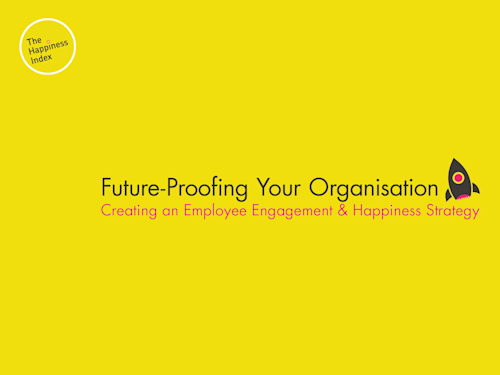
Creating an Employee Engagement AND Happiness Strategy
If you’ve not heard of quiet quitting by now, then you must be avoiding the internet! It’s all over social media, and it has some business leaders quite worried. Here’s our take on the quiet quitting phenomenon and what it might mean for your organisation.
Quiet quitting started as a TikTok trend with employees showing themselves finishing promptly and otherwise working less than normal. Since then people have been sharing their opinions across social media, and talking about sticking to their contracted hours, not taking on extra projects and being less present in meetings.
As with any rapidly spreading new terminology, there’s no one standard definition for “Quiet Quitting”. Some people are using it to mean working to contract and no more, while others are discussing it more in terms of coasting, or doing the bare minimum they can to get by.
What everyone can agree on though is that quiet quitting is a symptom of unengaged, unmotivated employees. The reasons given for this by those doing the quiet quitting ranges from not being adequately rewarded or appreciated for the extra work they’re doing, to rapid changes in their workplace cultures or expectations.
Of course, every individual’s reasons for quiet quitting will be completely unique to them. They may have been passed over for a promotion they think they deserved, they’re struggling with the cost of living crisis and feel their benefits package doesn’t reflect that, or they’re feeling disconnected from their organisation's mission or vision.
In general from reading stories about quiet quitting and talking to professionals, it seems that all of the main engagement neuroscience themes - meaning & purpose, clarity, personal growth and enablement are all involved. It’s important to remember that although engagement appears to be most important in causing quiet quitting, typically happiness and engagement are correlated, so there is likely to be a happiness component also.
It seems obvious, but your people are unlikely to tell you if they’re quiet quitting. Hopefully individual managers will have a close enough relationship with their teams to be able to keep a finger on the pulse as to changes within your organisation. However, it’s much better to be proactive rather than reactive in these situations.
The best way you can get a gauge on whether you’re likely to face quiet quitting as an issue within your organisation is to have an idea of the trends within your team when it comes to levels of employee engagement and happiness. Our platform allows you to quickly spot trends. This means you can use your engagement data like a weather forecast.
If it looks like there’s a dip in engagement metrics then this is a good indication that you may be seeing people quiet quitting within your organisation.
Our Co-Founder and Co-CEO spoke to Elite Business Online about what you can do around quiet quitting. Our main takeaway is that it’s important to engage in two-way communication. Really understanding how your people are thinking and feeling, involving them in the process of any change, and allowing them to have input into your organisation’s culture will help avoid quiet quitting.
Similarly clarity is one of the key drivers of engagement. This means that you need to be clear with your expectations when it comes to work culture, patterns and behaviours. As leaders, modelling and explaining these clearly will be very useful. Make sure you’re maintaining the same work-life balance as you would expect within the wider team.
Build trust to reduce quiet quitting in your organisation. Honest and transparent communication is one way of earning the trust of your employees. Communicating with the intention of sharing not scaring is always our motto at The Happiness Index. For example, if you’re unlikely to be able to offer promotions, pay rises or other benefits in the short term for any reason, being clear around this.

Linked to Happiness & Engagement in our neuroscience methodology... learn more
The Happiness Index helps organisations measure the key employee engagement AND happiness drivers to power their people strategy.
Our unique platform offers the products, insights and tools to shine a light on your cultural health and empower management to drive thriving cultures.
Our neuroscience-based pre-built surveys measure the full employee experience - from onboarding to exit to empower and enable organisations to understand their people and create data-led action plans.
